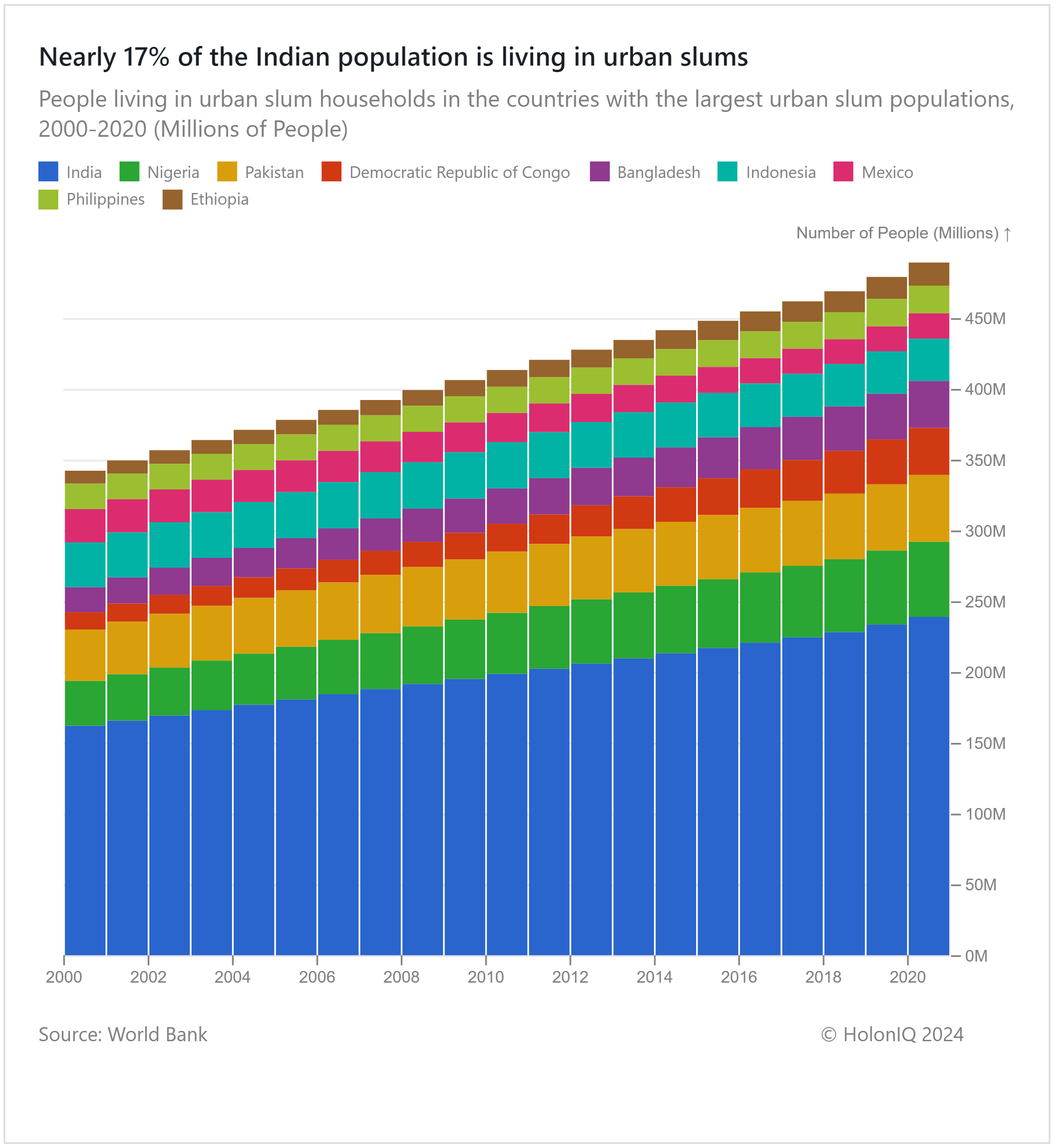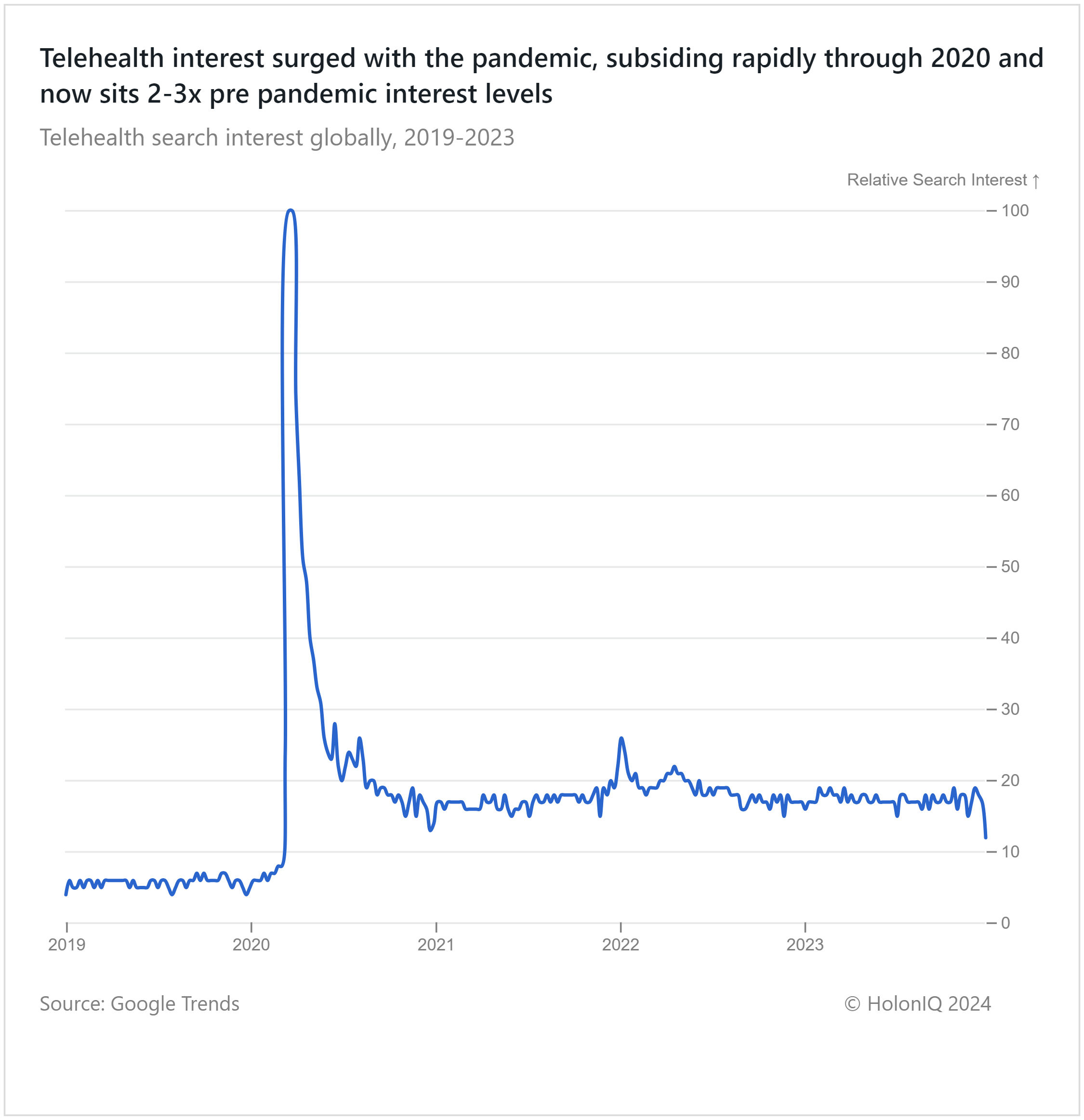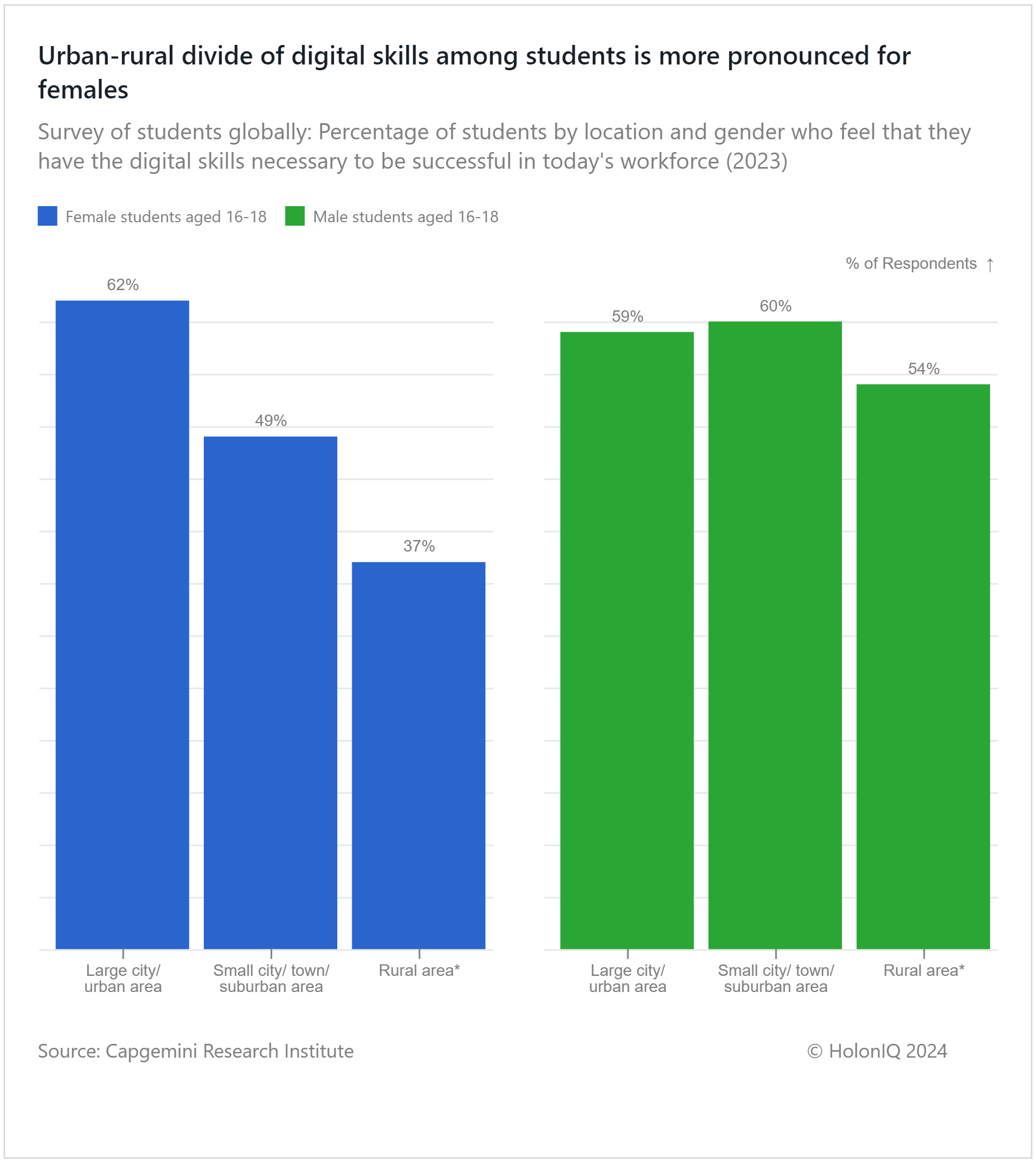🏚️ 480M in Slums. 3x Telehealth Interest. Digital Skills.
Chart of the Day #36 looks at Urban Slum Households, Telehealth Interest and Digital Skill Inequality.
E kaaro👋
The Economic Commission for Africa (ECA) aims to provide digital skills training to 650 million African workers by 2030 in the hopes of creating employment opportunities for youth. In an eco-friendly push towards waste collection in underserved communities, India has deployed electric rickshaws for door-to-door garbage collection in specific areas.
Today's Topics
- 🏚️ Urban Slum Households. 240M Indians live in urban slum households
- 🩺 Telehealth Interest. Telehealth interest 3x higher than pre-pandemic levels
- 🖥️ Digital Skills. Digital skill urban-rural divide highest for females
For unlimited access to over one million charts, request a demo.
🏚️ 240M Indians Live in Urban Slum Households

Although there have been significant strides in urbanization, approximately 480 million people still live in urban slums globally. This is mainly due to population growth, with people moving to cities in search of better economic prospects, overwhelming urban areas. Among countries with the highest slum populations, the Democratic Republic of Congo stands out, with 35% of its population living in these underserved areas. India, the world's most populous nation, contributes significantly, with its urban slum population growing by 47.5% since 2000 and now comprising 17% of the total Indian population.
Despite being an oil-rich nation, Nigeria's advancement in socio-economic development for its citizens has been slow, and its slum population continues to grow. Pakistan, Bangladesh, the Philippines, Ethiopia, and the Democratic Republic of Congo have also seen a similar rise in urban slums. However, Mexico and Indonesia have made concerted efforts, leading to a gradual reduction in urban slums.
🩺 Telehealth Interest 3x Higher Than Pre-Pandemic Levels

The popularity of telehealth has surged with the onset of the pandemic. The relative search interest for the term 'telehealth' spiked in March 2020, rising from negligible levels. Although this peak quickly subsided, interest remains 2-3 times higher than pre-pandemic levels. Alongside this increase in interest, telehealth has also attracted investments and garnered interest as an alternative means of medical consultation. However, it's essential to note that relative search interest may not directly translate to real-world developments.
Accessibility to telehealth services remains a prevalent issue, where low-income segments face difficulty accessing telehealth platforms. Additionally, the elderly encounter challenges in adapting to these new technologies. Although telehealth is gaining traction, a significant portion of the population still prefers in-person consultations, suggesting that traditional healthcare visits will continue to dominate in the near term.
🖥️ Digital Skill Urban-Rural Divide Highest for Females

Students aged 16–18 show a significant discrepancy in acquiring digital skills based on gender and location of residence. Male students report somewhat consistent rates of confidence in their digital skills, ranging from 54% to 60% across urban and rural regions. However, the urban-rural divide is more pronounced among female students. Only 37% of female students in rural areas report having the required digital skills for the workforce, compared to 62% of their peers in urban areas.
This reinforces the existing gender-based disparities in education, especially in rural areas, suggesting that women need to relocate to urban areas to access the same educational opportunities as their male counterparts. This gender-specific discrepancy emphasizes the need for action to provide an equal-opportunity learning landscape for all students.
Like getting this newsletter? For unlimited access to over one million charts, request a demo.
Thank you for reading. Have a great week ahead!
Have some feedback or want to sponsor this newsletter? Let us know at hello@holoniq.com
